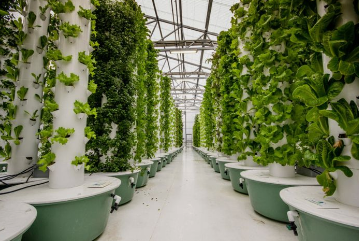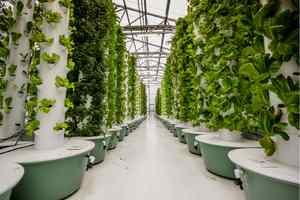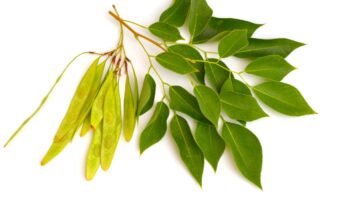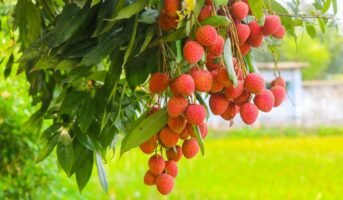Without using soil or bulk media, aeroponics is the practice of cultivating plants in an atmosphere of air or mist. The Greek words aer (“air”) and ponos (“labour”) are the origins of the word “aeroponic”. Since nutrients are transferred through water in aeroponics, it is a kind of hydroponics.
Aeroponic gardening’s fundamental tenet is to grow stuff floating in a sealed or partially sealed environment by misting their lower stems and roots with atomised or sprayed nutrient-rich water solutions.

Source: Pinterest
The canopy, sometimes referred to as the branches and crown, extends above. The plant support network separates the plant’s roots. To reduce labour and costs, closed-cell foam is frequently squeezed around the bottom stem and placed into a hole in the aeroponic chamber. For bigger plants, a typical characteristic is employed to sustain the weight of the foliage and fruit.
For the plants to develop stronger and more rapidly than crops cultivated in a medium, the environment should ideally be kept free of pests and disease. Although the Aeroponics system could prove high-maintenance and a bit expensive, it proves worth the effort and cost.
See also about: Tomatoes
Aeroponics vs hydroponics: What’s the difference?
- In hydroponics, plants can either be continuously suspended in water or supplied by a sporadic water flow.
- Aeroponic plants never submerged in water receive their nutrition from a mist sprayed onto their roots.
- Each technique has a distinct name because of this important distinction.
- Aeroponics provides crops with much stronger and healthier root systems. It has a much higher potential performance than a standard hydroponic system.
- Aeroponics offers a significantly better potential performance than a typical hydroponic system, as it gives crops far stronger and healthier root systems.
How to grow plants with aeroponics?
In the aeroponic system, plants are often enclosed within a sealed container and inserted into the platform’s top openings on top of a reservoir.
You must make a supporting collar that keeps the stem in place because plants have no root zone material to attach. These helmets must be hard and flexible to provide room for root growth while supporting plants upright and holding the roots in place.
Its pumps and sprinkler system extract vapour from the nutrient-rich solution (which is a hydro-atomized spray combination of water, nutrients, and growth hormones) and sprinkles the mists in the reservoirs, encasing and absorbing the roots of the hanging plants.
This spray gives the plant the precise moisture needed to expand and develop robustly. The timer provides the plants with scheduled spray frequencies and intensity.
Some individuals believe that an aeroponic system would make plants more fragile than hydroponics.
However, that is untrue. The level of oxygen accessible to the plants without needing a root zone medium restricting it is the key to the simulation design.
Aeroponics: Tools required
Some of the tools you will need for aquaponics gardening include:
- A container/reservoir to store the nutrient solution
- Mist nozzles
- Nutrient pump
- Baskets to suspend plants
- Tubing to distribute water from the nutrient pump to the mister heads
- An enclosed growing chamber for the root zone
- Timer to turn the pump on and off
- Watertight containers to grow the plant’s root systems
What can you grow with aeroponics?
In theory, there is no limit of the types of plants you can grow with aeroponics. In practice, aeroponics is majorly used to grow leafy greens, marijuana, culinary herbs, tomatoes, cucumbers, and strawberries. Root crops, which are impractical to grow with hydroponics, can also be grown with aeroponics. This is because this gardening technique offers plenty of room for the plants to grow. Other vegetable crops can also be grown with aeroponics, however, they have more complex nutrient requirements. Trees and fruiting shrubs are an impractical choice for aquaponics due to their size.
Aeroponics system: Cost
DIY variants may be created for about $100 (around ₹8000), while high-end professional systems with automatic nutrient monitoring and a backup power source start in the four figures.
Aeroponics: Types
Here are three types of aeroponics systems:
High-pressure aeroponics (HPA)
The HPA system is quite advanced and efficient compared to other aeroponics systems.
It runs at exceedingly high pressure for the atomisation of water to immensely small droplets with a size of around 50 microns or even lesser. These tiny water droplets generate more oxygen for the plant roots than the low-pressure aeroponics, resulting in high efficiency.
However, this aeroponics system is expensive to set up and maintain since it needs advanced equipment. This system is mostly implemented commercially than at home.
Low-pressure aeroponics (LPA)
Due to its cost-effective, easy-to-use, highly available setup, this aeroponics system is most common among aeroponics hobbyists.
To set up low-pressure aeroponics, you’ll need a strong pump that can move water into the sprinkler head for spraying water around the plant roots. The low-pressure generates small droplets, but larger than the high-pressure aeroponic system.
Ultrasonic fogger aeroponics
Also known as fogponics, growers in this system use an ultrasonic fogger for atomising water into tiny water droplets. They are visible in the form of fog.
However, this system has a drawback. Although it’s easier for plant roots to absorb tiny water droplets, it creates moisture that, in turn, creates a salt that clogs the foggers.
Aeroponics: What does an aeroponics system look like?
Actually, the hydroponic system is a subset of aeroponics. While no growth media is used at all with aeroponics, hydroponics employs water as the plant’s growing medium. Many scholars have since added to the theory and use of this strategy, which was developed in the 1940s.
The demand for aeroponics has increased since there is a clear need for a more practical approach to cultivating plants. It is one of the finest ways for plants to grow in a soil-free environment.
In an aeroponic system, plants are not housed in any solid substance, including Rockwool or soil. Alternatively, in a closed-loop system, plant roots are suspended in the atmosphere in a grow chamber.
All plants require nutrients. Thus, the organisms will use considerable energy developing roots to locate these nutrient-rich areas in the ground for bloom initiation and development. In contrast, nutrients are directly given to the roots in hydroponic and aeroponic systems.
Since the roots are accessible to more oxygen than in ordinary hydroponic flowers, the crops often develop quickly and take up more nutrients. Additionally, there are fewer hazards from diseases because there is nowhere for waste or pathogens to live around root zone illness.

Source: Pinterest
Aeroponics: Uses
Instead of being buried in soil or water, plant roots float in the air in an aeroponic system. A nutritional mist is exposed to plant roots, giving the plants all the nutrients and water they need to flourish.
Plant health is improved in an aeroponic chamber because the roots of the plants have more access to air gases like oxygen. An aeroponic system guarantees that this won’t happen. Plant roots can get water-logged and oxygen-deprived when immersed, much like overwatering your home plant will drown.
Plants with strong root systems develop more quickly. Consequently, your farm experiences multiple crop cycles each year and produces a higher yield.
Aeroponics: Advantages
You can enjoy several gardening benefits by adopting Aeroponics.
Low reliance on the land
Since planting seeds directly into the farmland’s soil is not necessary, it is possible to enlarge the farm’s floor space horizontally and vertically. This advantage has led to estimates that aeroponic farming uses 98% less land than its conventional competitors.
Permanent production
A distinctive type of farming called Soilless Controlled Environment Agriculture includes aeroponics and hydroponics (CEA). Any agricultural technique that can be carried out indoors with the help of automated devices is referred to by this name.
Low water dependency
The heavy reliance on water, especially during the rainy seasons, is one of the main difficulties of traditional farming. In addition to not needing the monsoons, an aeroponic farm uses 95% less water overall.
Aeroponics: Drawbacks
Here are a few drawbacks of aeroponics that you should know about.
Continuity and accuracy
The science of aeroponics is exact. To keep the crops healthy and happy, the nutrient concentration in the mist must be precisely managed.
Unreliable equipment
There is a probability that one or more of the equipment’s many working parts will occasionally malfunction in an aeroponics farm. If this is not well-watched, it might seriously harm the crops.
Cost and maintenance
Aeroponics is a sensitive system. You’ll constantly need to monitor the pH and nutrient-calorie ratio. These factors also make the initial setup of aeroponics quite expensive, costing hundreds of dollars per unit.
FAQs
Is aeroponics better than hydroponics?
Depending on what you plan to grow, how much your food will cost, and the market you pick, you will need to decide between an aeroponic and a hydroponic system. Aeroponics offers a significantly better potential performance than a typical hydroponic system, as it gives crops far stronger and healthier root systems.
What are the disadvantages of aeroponics?
Aeroponics can be tougher to maintain since the nutrient concentration must be managed precisely, and it can be a bit costly.
What is an aeroponics system?
Plants may be grown without soil using an aeroponic system. Instead, a nutrient-rich mist irrigates floating roots in the air.
Is aeroponic healthy?
Plant health is improved in an aeroponic chamber because the roots of the plants have more access to air gases like oxygen. An aeroponic system guarantees that this won't happen. Plant roots can get water-logged and oxygen-deprived when immersed, much like overwatering the home plant will drown it.
What vegetables grow best in aeroponics?
Strawberries are a wonderful crop choice for an aeroponic system because they may have a relatively short growing season. Aeroponically raised tomatoes are another option.
Housing News Desk is the news desk of leading online real estate portal, Housing.com. Housing News Desk focuses on a variety of topics such as real estate laws, taxes, current news, property trends, home loans, rentals, décor, green homes, home improvement, etc. The main objective of the news desk, is to cover the real estate sector from the perspective of providing information that is useful to the end-user.
Facebook: https://www.facebook.com/housing.com/
Twitter: https://twitter.com/Housing
Email: editor@housing.com












